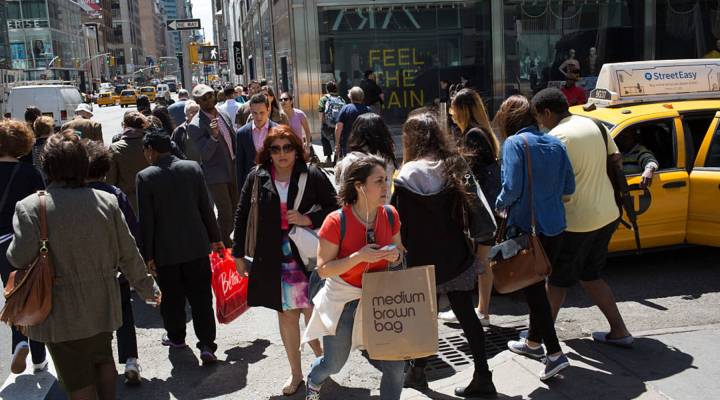
5 things to know about GDP
Share Now on:
5 things to know about GDP

We were supposed to find out Wednesday just how quickly the economy has been growing, but that’s been delayed because of the partial government shutdown, which ended Jan. 25.
The Bureau of Economic Analysis postponed the release of its fourth-quarter gross domestic product report because of missing data on retail sales and construction spending.
Gross domestic product, defined by the Bureau of Economic Analysis as the measure of “the market value of the goods and services a nation produces,” can indicate just how fast the economy is growing. But what goods and services? Here’s a look at what it doesn’t measure and what an ideal growth rate is.
1. Unpaid work doesn’t count
While GDP tries to measure the value of the services a country produces, it doesn’t look at the services that happen to go unpaid.
That includes unpaid internships, housekeeping, or the time you spend taking care of aging parents. The reason why? There’s no global standard for measuring hours of unpaid work.
Some economists and economic historians have argued that this especially ends up discounting women’s contributions.
2. Products that have been resold don’t either
Even old homes aren’t measured as part of GDP.
William Boal, an economics professor at Drake University, said that a house has to be “newly constructed” for it to count, which means the housing market doesn’t exactly mesh with GDP.
And the same principle applies to other used products, like automobiles.
“I usually buy used cars myself. And they’re not counted as part of GDP when I buy them — they’re counted as part of GDP when they’re first made,” Boal said. “Because, of course, the P stands for product, meaning production. And something that’s been around for a while is not being produced this year.”
However, Boal added that GDP would take into account the services involved in those transactions (e.g., a dealer who handled the sale of a used car.)
3. A healthy GDP rate would be about 2 to 3 percent
GDP growth should stay ahead of population growth, Boal said. In 2017, America’s population growth rate stood at 0.7 percent.
“In general, you expect countries that are poorer to be growing faster. The consensus is that once you’ve caught up with the frontier, the high-income countries, it’s harder to grow fast,” Boal said. “Two to 3 percent means we’re growing faster than the population, which is good. That’s how things have been going pretty much in the last 20 years or so. And so that would be sort of steady growth based on recent historical experience — in that sense, it’s healthy.”
4. GDP can be too high
Trump said his economic policies will deliver faster growth than under the Obama administration. He and economic officials have predicted growth of 3 to 4 percent, or even higher, but really high growth might not necessarily be a good thing.
Boal said he thinks economists might get nervous if they were seeing a growth rate of above 4 percent in recent years.
“Sometimes you see that right before a recession — sort of a frenzy of activity that’s not sustainable,” he noted. “If the economy grows too fast then typically what happens is inflation starts to build up, and that’s not a situation that people want. So they tap the brakes a little bit at the Federal Reserve, and sometimes they tap it too hard.”
5. Governments don’t have a whole lot of power to change GDP
Even if the U.S. could control growth to the levels they wanted, it might be out of their hands.
“In the near term, the government has a lot of power to drive economic growth. In the longer term, surprisingly little,” economist Marc Levinson told Marketplace. “Productivity is essentially how much output a worker can produce in an hour’s work, and governments have really little control over that.”
Some put a lot of faith in government to improve the economy because after World War II, advancing countries were growing at an unprecedented rate and their governments claimed credit for that.
“We had economists saying it: ‘Hey, we now have the expertise — with fancy tools like computers and linear programming — we can assure fast growth and low unemployment forever,’” Levinson explained.
There’s a lot happening in the world. Through it all, Marketplace is here for you.
You rely on Marketplace to break down the world’s events and tell you how it affects you in a fact-based, approachable way. We rely on your financial support to keep making that possible.
Your donation today powers the independent journalism that you rely on. For just $5/month, you can help sustain Marketplace so we can keep reporting on the things that matter to you.












